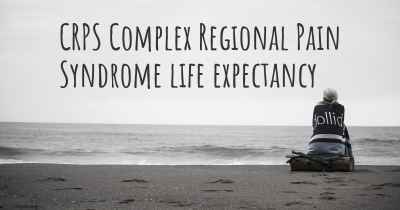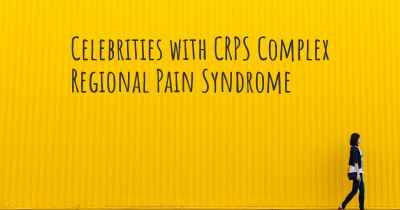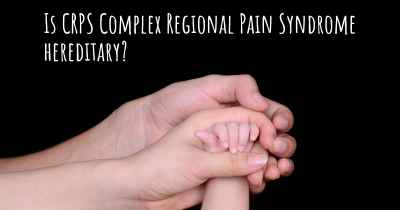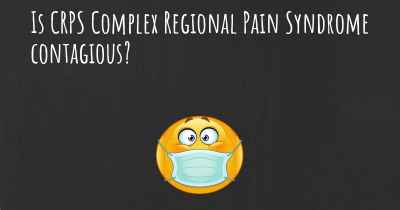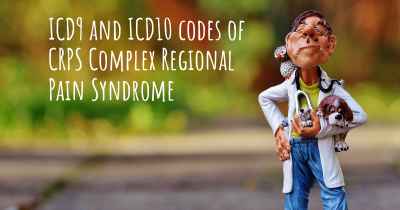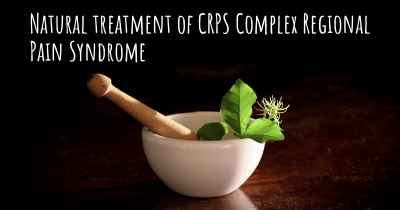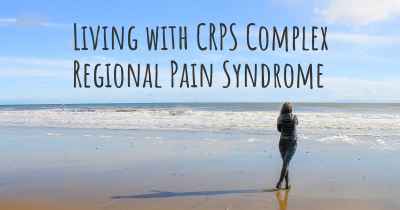17
What is the history of CRPS Complex Regional Pain Syndrome?
When was CRPS Complex Regional Pain Syndrome discovered? What is the story of this discovery? Was it coincidence or not?
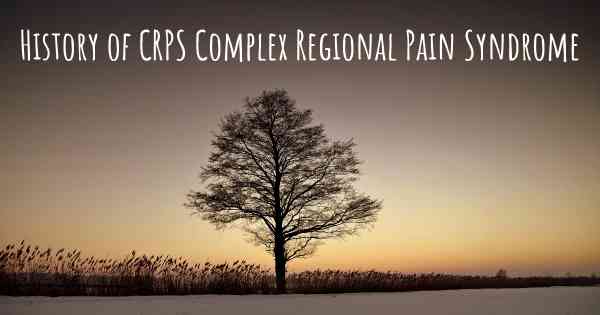
Ambroise Paré . father of the modern surgery, was the first to describe a disorder that could be related to CRPS but thefirst written description of CRPS was made by Denmark, a british surgeon that used to work at the Royal Navy Hospital in the Hampshire.
Posted Sep 6, 2017 by [email protected] 5060
Was bitten by a dog while at work. Knew something was really wrong from almost the first week.
Posted Sep 10, 2017 by Craig 1600
Not really aware of the history. Try to look forward to the future of it.
Posted Sep 13, 2017 by Andy 3550
The first descriptions of CRPS were documented during the America Civil War (1861-65) by Silas Weir Mitchell MD, a young US Army contract physician, who treated soldiers with gunshot wounds. In his book "Gunshots Wounds and Other Injuries", he described pain which persisted long after the bullets were removed from the bodies of soldiers. He noted that the pain was characteristically of a burning nature, and named it "causalgia"(Greek for burning pain)which he attributed to the consequences of nerve injury. He observes:
"...a painful swelling of the joints....may attack any or all articulations of a member. It is distinct from the early swelling due to the inflammation about the wound itself, although it may be masked by it for a time:nor is it merely a part of the general edema....Once fully established, it keeps the joint stiff and sore for weeks or months. When the acute stage has departed, the tissues become hard and partial anklyosis results."
Another military surgeon, Rene Leriche MD, (1879-1955), treated many WW1 soldiers who also had nerve damage. He documented the classic signs of CRPS and tried to alleviate the pain with a sympathectomy:
"A few months previously I had unexpectedly encountered one of these cases. I was struck by the resemblance which the condition had to that of a sympathetic disorder; the cyanosis, the sweating, the paroxysmal nature of the pains, the effect on the general mental state, the reference of painful phenomena to a distance---all pointed in that direction. And, remembering that the sympathetic, in its distribution to the limbs, follows the course of the arteries, I asked myself whether, in those cases of nerve injury complicated by arterial wounds, it was not the injury to the sheath of the vessel that determined their painful and trophic features---the wound of the sympathetic---... Starting from this point, I asked myself whether, by acting upon the perivascular sympathetic, I might be able to succeed in modifying the causalgia."
During WWII, William K. Livingston MD, (1892-1966), a military doctor, was working at Oakland Naval Hospital where he treated peripheral nerve injures of soldiers who had chronic pain. He wrote about the "vicious circle of pain as similar with vasoconstriction and atrophy". He compared this pain to "circus movements in the heart muscle." He also talked about "mirror images" of pain or sympathetic pain in which the limb contra lateral to the injury becomes sympathetic. Modern research has found interneuron connections that not only ascend and descend the pain pathways but result in abnormal neurotransmission also to the contralateral side.
In 1900, Sudeck, a surgeon from Hamburg proposed that Regional Sympathetic Dystrophy could be caused by an "exaggerated inflammatory response after injury or operation of an extremity". The signs and symptoms of acute inflammation were rubor, calor, dolor, tumor and functio laesa. This theory forms the basis of modern Dutch research and treatment; that RSD begins as inflammation.
In 1947, Steinbrocker renamed the disease "shoulder-hand syndrome". He also began using oral corticosteriods as treatment in 1953. Meanwhile, Serre in France and Kozin in USA, used nuclear scans e.g. bone scans using technetium labelled methylenediphosphonate and found diffuse disturbances in peri-articular areas. Later Kozin implemented the three phase nuclear scan which is still used today. Hannington-Kiff began using the intravenous regional blockade of the sympathetic nervous system with guanethidine in 1974. This treatment is still used today along with physical therapy.
Following these and other developments, the confusion over the names of this syndrome increased. Algodystrophie was used primarily in France, Sudeck's atrophy referred to the osteoporosis part of the disease. When the disease began as a result of nerve injury, it was called "causalgia" after Mitchell. If it began with non-nerve injuries, it could be called "mimocausalgia" or "minor causalgia." "Posttraumatic dystrophy" (Dutch term) referred to the specific event which caused RSD.
Other names surfaced in the literature such as "vasospastic", "neurotrophic" "neurovascular" or "reflex". The most common was "sympathetic". Roberts introduced the name "sympathetically maintained pain" in 1986 and it has become popular with pain researchers. This term is a condition where pain and hyperalgesia are relieved with a blockade.
Some common names in the literature for RSD/CRPS are:
algodystrophie algoneurodystrophy peripheral trophoneurosis Morbus Sudeck
algodystrophie major causalgia posttraumatic algodystrophy Sudeck's osteodystrophy
atrophie de Sudeck minor causalgia posttraumatic dystrophy pourfour du Petit syndrome
causalgie minor traumatic dystrophy posttraumatic neurodystrophy neurovascular dystrophy
In 1995, Michael Stanton-Hicks and a committee of RSD researchers decided to give RSD (Reflex Sympathetic Dystrophy) a new name:
Complex Regional Pain Syndrome. Why? If one name was decided upon, then further research could be done and confusion would be eliminated.
Now we have CRPS type 1 which is "RSD" and CRPS type 2 which is "causalgia." What is the difference? As of a 2006 discovery by Oaklander, both have the same exact symptoms and both are due to nerve injury. Some patients with this disease still call it "RSD" while the medical community refers to it as "CRPS". Both names are now used interchangeably.
There you are. Clear as mud!
"...a painful swelling of the joints....may attack any or all articulations of a member. It is distinct from the early swelling due to the inflammation about the wound itself, although it may be masked by it for a time:nor is it merely a part of the general edema....Once fully established, it keeps the joint stiff and sore for weeks or months. When the acute stage has departed, the tissues become hard and partial anklyosis results."
Another military surgeon, Rene Leriche MD, (1879-1955), treated many WW1 soldiers who also had nerve damage. He documented the classic signs of CRPS and tried to alleviate the pain with a sympathectomy:
"A few months previously I had unexpectedly encountered one of these cases. I was struck by the resemblance which the condition had to that of a sympathetic disorder; the cyanosis, the sweating, the paroxysmal nature of the pains, the effect on the general mental state, the reference of painful phenomena to a distance---all pointed in that direction. And, remembering that the sympathetic, in its distribution to the limbs, follows the course of the arteries, I asked myself whether, in those cases of nerve injury complicated by arterial wounds, it was not the injury to the sheath of the vessel that determined their painful and trophic features---the wound of the sympathetic---... Starting from this point, I asked myself whether, by acting upon the perivascular sympathetic, I might be able to succeed in modifying the causalgia."
During WWII, William K. Livingston MD, (1892-1966), a military doctor, was working at Oakland Naval Hospital where he treated peripheral nerve injures of soldiers who had chronic pain. He wrote about the "vicious circle of pain as similar with vasoconstriction and atrophy". He compared this pain to "circus movements in the heart muscle." He also talked about "mirror images" of pain or sympathetic pain in which the limb contra lateral to the injury becomes sympathetic. Modern research has found interneuron connections that not only ascend and descend the pain pathways but result in abnormal neurotransmission also to the contralateral side.
In 1900, Sudeck, a surgeon from Hamburg proposed that Regional Sympathetic Dystrophy could be caused by an "exaggerated inflammatory response after injury or operation of an extremity". The signs and symptoms of acute inflammation were rubor, calor, dolor, tumor and functio laesa. This theory forms the basis of modern Dutch research and treatment; that RSD begins as inflammation.
In 1947, Steinbrocker renamed the disease "shoulder-hand syndrome". He also began using oral corticosteriods as treatment in 1953. Meanwhile, Serre in France and Kozin in USA, used nuclear scans e.g. bone scans using technetium labelled methylenediphosphonate and found diffuse disturbances in peri-articular areas. Later Kozin implemented the three phase nuclear scan which is still used today. Hannington-Kiff began using the intravenous regional blockade of the sympathetic nervous system with guanethidine in 1974. This treatment is still used today along with physical therapy.
Following these and other developments, the confusion over the names of this syndrome increased. Algodystrophie was used primarily in France, Sudeck's atrophy referred to the osteoporosis part of the disease. When the disease began as a result of nerve injury, it was called "causalgia" after Mitchell. If it began with non-nerve injuries, it could be called "mimocausalgia" or "minor causalgia." "Posttraumatic dystrophy" (Dutch term) referred to the specific event which caused RSD.
Other names surfaced in the literature such as "vasospastic", "neurotrophic" "neurovascular" or "reflex". The most common was "sympathetic". Roberts introduced the name "sympathetically maintained pain" in 1986 and it has become popular with pain researchers. This term is a condition where pain and hyperalgesia are relieved with a blockade.
Some common names in the literature for RSD/CRPS are:
algodystrophie algoneurodystrophy peripheral trophoneurosis Morbus Sudeck
algodystrophie major causalgia posttraumatic algodystrophy Sudeck's osteodystrophy
atrophie de Sudeck minor causalgia posttraumatic dystrophy pourfour du Petit syndrome
causalgie minor traumatic dystrophy posttraumatic neurodystrophy neurovascular dystrophy
In 1995, Michael Stanton-Hicks and a committee of RSD researchers decided to give RSD (Reflex Sympathetic Dystrophy) a new name:
Complex Regional Pain Syndrome. Why? If one name was decided upon, then further research could be done and confusion would be eliminated.
Now we have CRPS type 1 which is "RSD" and CRPS type 2 which is "causalgia." What is the difference? As of a 2006 discovery by Oaklander, both have the same exact symptoms and both are due to nerve injury. Some patients with this disease still call it "RSD" while the medical community refers to it as "CRPS". Both names are now used interchangeably.
There you are. Clear as mud!
Posted Sep 15, 2017 by DrLisa 3750
CRPS was originally known as RSD
Posted Sep 19, 2017 by Alex 2550
It goes back to the civil war from what I understand
Posted Nov 11, 2017 by Robbie 2000
First brought out in the Civil War times, cited to be burning pain. It spread from there , with the name and burning sensation and Latin terms...
Posted Nov 11, 2017 by Aj 2000
CRPS was first noted and described by a military doctor in the early 1900's. Only recently has it been recognized as a valid medical issue and research finds allocated to it.
Posted Nov 11, 2017 by Colleen85201 1700
Recorded during the civil war as caustslgia. Then called rsd. And now called crps type 1 or 2
Posted Nov 12, 2017 by Shanna 5000
I do not know the history of CRPS.
Posted Nov 12, 2017 by ladyff1481 2050
It was first documented during the first world war. It's probably as old as man but no one knew what it was.
Posted Nov 13, 2017 by Thea 3150
Goes back to the blood letting of King Chales the 1V. Discovery of a burning pain after wound had healed. During the American Civil War it became more obvious amongst the soldiers.Silus Mier , a surgeon studied this and known as the father of medicine < he treated soldiers with this condition.previously known as RSD < the name changed to CRPS when Specialist gathered to discuss this syndrome in Budapest.it wax here that they aligned symptoms and visible signs to a criteria for diagnosis. This criteria < used today is known as the Budapest Criteria.
Posted Oct 25, 2018 by Misty 2100
It has been called many different names going back to the civil war where it was called causalgia.
Posted Nov 1, 2018 by Judy 3000
Was discovered back during the Civil War by Silas Weir Mitchell who noticed soldiers still complaining of pain after injury had healed.
Posted Jan 5, 2019 by Cynthia 4000
First diagnosed during Civil War. And sadly no great improvement on treatments have be found.
Wrapping, soaking , drugging up....
Wrapping, soaking , drugging up....
Posted Jan 16, 2021 by Patricia 3050
Think it was first discovered during the American Civil war. Found in soldiers. It has had hundreds of name changes since then. Also known as Reflex Sympathetic Dystrophy.( RSD) Again there are RSD societies and CRPS organisations who can orovide the answers
Posted Nov 3, 2022 by Heather 5020
